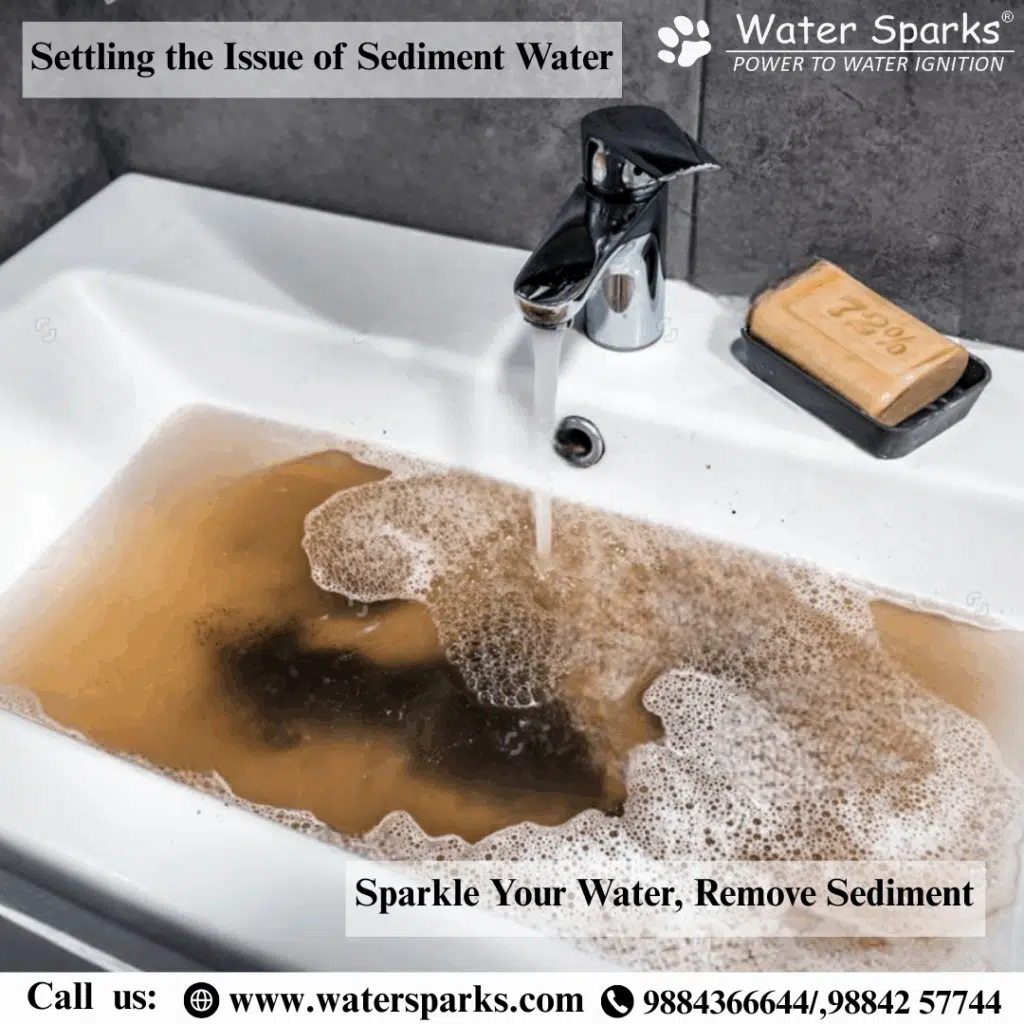Water is essential to life, but not all water is clean or safe. One common issue in both residential and industrial supplies is sediment in water, which not only affects water quality but also raises serious concerns for health and appliance longevity. In this blog, we’ll explore what sediment in water is, its causes, its effects, and the most effective solutions. Whether you’re a homeowner or business, understanding sediment is the first step toward choosing the right water treatment.

What is Sediment in Water?
Sediment in water refers to particles such as sand, silt, rust, and other organic or inorganic materials that are suspended in water. These particles can be visible or microscopic, but they degrade the clarity, taste, and safety of your water. Customers often turn to water treatment solutions when they notice discoloration or residue in their tap or well water, especially in older plumbing systems or during seasonal changes.
Causes of Sediment in Water
There are several causes behind the presence of sediment in water. Natural erosion, poorly maintained pipelines, corroding plumbing, and underground drilling activities can all introduce sediment into your water supply. If you rely on well water, runoff and loose soil can significantly increase sediment levels. Regardless of the source, these problems highlight the need for proactive water treatment systems that include sediment filters to capture these contaminants before they reach your tap.
Effects of Sediment on Health and Appliances
Sediment not only affects the look and taste of water but also poses potential health risks and damages appliances. While most sediment itself isn’t harmful, it can carry bacteria, metals, and pollutants. It also clogs pipes, reduces water pressure, and shortens the lifespan of appliances like water heaters and washing machines. That’s why effective water treatment isn’t just about aesthetics—it’s a critical investment in your household or facility’s infrastructure and safety.
Water Testing: First Step Toward a Solution
Before jumping into solutions, testing your water is the key first step. Professional testing can identify the type and concentration of sediment, helping you choose the most effective treatment option. Water testing kits are available for at-home use, but for accurate results, hiring a water treatment specialist is highly recommended. This ensures that the solution you implement directly targets the root of the problem.
Solutions for Sediment in Water with Water Sparks
There are multiple water treatment solutions available for removing sediment:
Water Sparks Sediment Filters: These are the most direct solution. Filters are rated by microns—the smaller the rating, the finer the particles they catch.
Water Sparks Backwashing Filters: These filters clean themselves automatically and are ideal for heavy sediment levels.
Water Sparks Whole-House Filtration Systems: Best for homes with widespread sediment problems, ensuring clean water at every tap.
Water Sparks Reverse Osmosis Systems: These are high-end systems that remove almost all impurities, including sediment, chemicals, and bacteria.
Choosing the right water treatment option depends on the sediment level, water usage, and your budget.
Maintenance is Key
Installing a sediment filtration system is not a one-and-done task. Regular maintenance is necessary to ensure your water treatment system works efficiently. Filters must be changed according to the manufacturer’s guidelines, and systems need periodic inspections. Neglecting maintenance can lead to clogs, reduced water pressure, or the reintroduction of sediment into your water supply.
Long-Term Benefits of Treating Sediment
Proper sediment control provides long-term benefits such as cleaner drinking water, extended appliance life, and fewer plumbing repairs. For businesses, effective water treatment means better compliance with health regulations and a safer environment for employees and customers. For families, it means peace of mind knowing your water is clean, safe, and free from harmful debris.
Conclusion: Make the Smart Choice Today
Sediment in water may seem like a minor inconvenience, but its impacts can be significant if left untreated. Awareness is the first step, and action is the next. Investing in proper water treatment not only improves water quality but also protects your health and property in the long run. Don’t wait until sediment causes damage—reach out to a trusted water treatment provider today for testing and tailored solutions.
